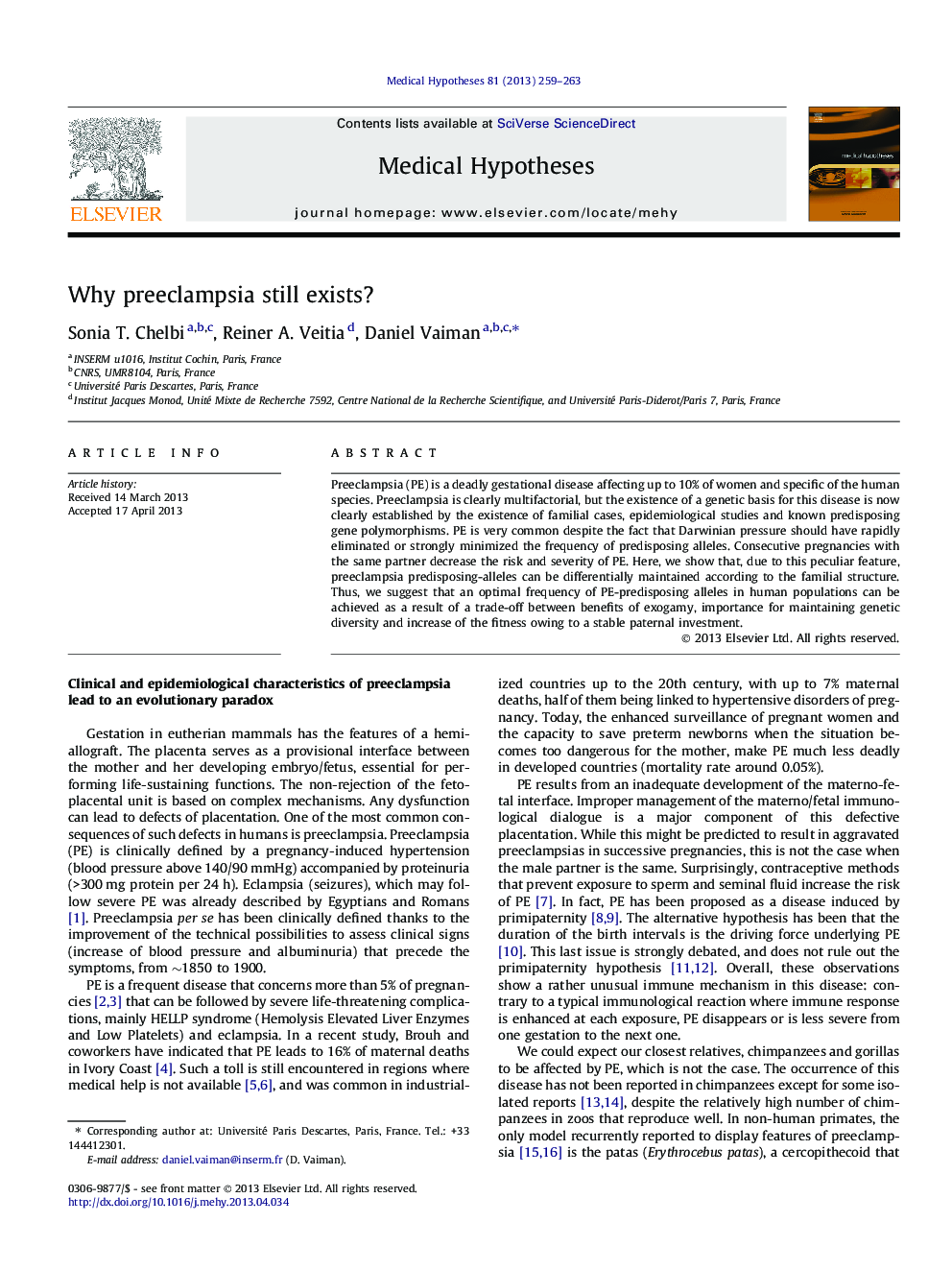| کد مقاله | کد نشریه | سال انتشار | مقاله انگلیسی | نسخه تمام متن |
|---|---|---|---|---|
| 2489105 | 1115015 | 2013 | 5 صفحه PDF | دانلود رایگان |

Preeclampsia (PE) is a deadly gestational disease affecting up to 10% of women and specific of the human species. Preeclampsia is clearly multifactorial, but the existence of a genetic basis for this disease is now clearly established by the existence of familial cases, epidemiological studies and known predisposing gene polymorphisms. PE is very common despite the fact that Darwinian pressure should have rapidly eliminated or strongly minimized the frequency of predisposing alleles. Consecutive pregnancies with the same partner decrease the risk and severity of PE. Here, we show that, due to this peculiar feature, preeclampsia predisposing-alleles can be differentially maintained according to the familial structure. Thus, we suggest that an optimal frequency of PE-predisposing alleles in human populations can be achieved as a result of a trade-off between benefits of exogamy, importance for maintaining genetic diversity and increase of the fitness owing to a stable paternal investment.
Journal: Medical Hypotheses - Volume 81, Issue 2, August 2013, Pages 259–263